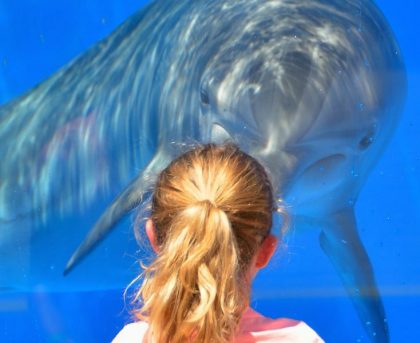ABOUT
Pequest Trout Hatchery
The Pequest Trout Hatchery raises more than 600,000 trout each year to stock the waters of New Jersey. Located near the Pequest River, the Hatchery educates the public on fishing, forestry, and natural resources. raises more than 600,000 trout each year to stock the waters of New Jersey. Located near the Pequest River, the Hatchery educates the public on fishing, forestry, and natural resources. Hands-on field trip programs are available. The Pequest Wildlife Management Area is popular for a variety of outdoor recreational activities including fishing, bird watching, hiking, archery, and photography. Hiking trails can lead visitors to some impressive views as they cross up hills, through fields and mixed growth forests, and even a gravel pit. Informational displays along the "RED" trail provide hikers with information about the PWMA's natural resources.
contact info
Hrs: Mon.-Fri. 9AM-4PM.
HELPFUL LESSON PLAN(S)
Prepared by FieldTripDirectory.com
Aquarium Lesson Plan
FUN FACTS
• Did you know a sea cucumber can shoot its intestines at predators, and then regrow them, in order to avoid being eaten?
• An electric eel can produce 500 watts of electricity (that’s enough to light up 10 light bulbs) to frighten away predators.
• Dolphins sleep with one half of the brain and one eye open to watch for danger.
• No matter how many pieces you cut a sea sponge into each piece will continue living and growing.
• Ocean life can do amazing things to survive. As you visit an aquarium with your students, note the different ways animals defend themselves. Just like a squid, people wouldn’t bother you either if you squirted black ink in their face!
View Lesson Plan>>ABOUT
Pequest Trout Hatchery
The Pequest Trout Hatchery raises more than 600,000 trout each year to stock the waters of New Jersey. Located near the Pequest River, the Hatchery educates the public on fishing, forestry, and natural resources. Hands-on field trip programs are available. The Pequest Wildlife Management Area is popular for a variety of outdoor recreational activities including fishing, bird watching, hiking, archery, and photography. Hiking trails can lead visitors to some impressive views as they cross up hills, through fields and mixed growth forests, and even a gravel pit. Informational displays along the "RED" trail provide hikers with information about the PWMA's natural resources.
contact info
Hrs: Mon.-Fri. 9AM-4PM.
HELPFUL LESSON PLAN(S)
Prepared by FieldTripDirectory.com
Aquarium Lesson Plan
FUN FACTS
• Did you know a sea cucumber can shoot its intestines at predators, and then regrow them, in order to avoid being eaten?
• An electric eel can produce 500 watts of electricity (that’s enough to light up 10 light bulbs) to frighten away predators.
• Dolphins sleep with one half of the brain and one eye open to watch for danger.
• No matter how many pieces you cut a sea sponge into each piece will continue living and growing.
• Ocean life can do amazing things to survive. As you visit an aquarium with your students, note the different ways animals defend themselves. Just like a squid, people wouldn’t bother you either if you squirted black ink in their face!
View Lesson Plan>>ABOUT
Pequest Trout Hatchery
The Pequest Trout Hatchery raises more than 600,000 trout each year to stock the waters of New Jersey. Located near the Pequest River, the Hatchery educates the public on fishing, forestry, and natural resources. Hands-on field trip programs are available. The Pequest Wildlife Management Area is popular for a variety of outdoor recreational activities including fishing, bird watching, hiking, archery, and photography. Hiking trails can lead visitors to some impressive views as they cross up hills, through fields and mixed growth forests, and even a gravel pit. Informational displays along the "RED" trail provide hikers with information about the PWMA's natural resources.
contact info
Hrs: Mon.-Fri. 9AM-4PM.
HELPFUL LESSON PLAN(S)
Prepared by FieldTripDirectory.com
Aquarium Lesson Plan
FUN FACTS
• Did you know a sea cucumber can shoot its intestines at predators, and then regrow them, in order to avoid being eaten?
• An electric eel can produce 500 watts of electricity (that’s enough to light up 10 light bulbs) to frighten away predators.
• Dolphins sleep with one half of the brain and one eye open to watch for danger.
• No matter how many pieces you cut a sea sponge into each piece will continue living and growing.
• Ocean life can do amazing things to survive. As you visit an aquarium with your students, note the different ways animals defend themselves. Just like a squid, people wouldn’t bother you either if you squirted black ink in their face!
View Lesson Plan>>
